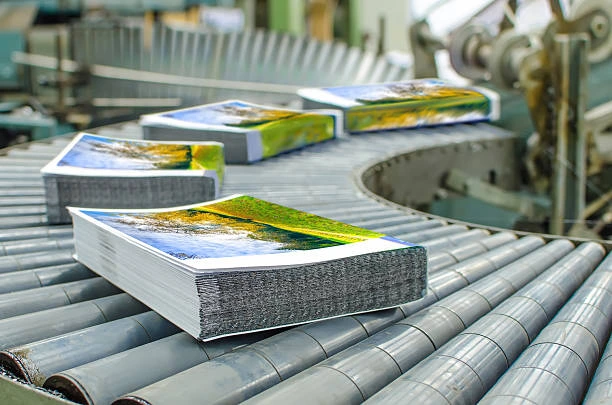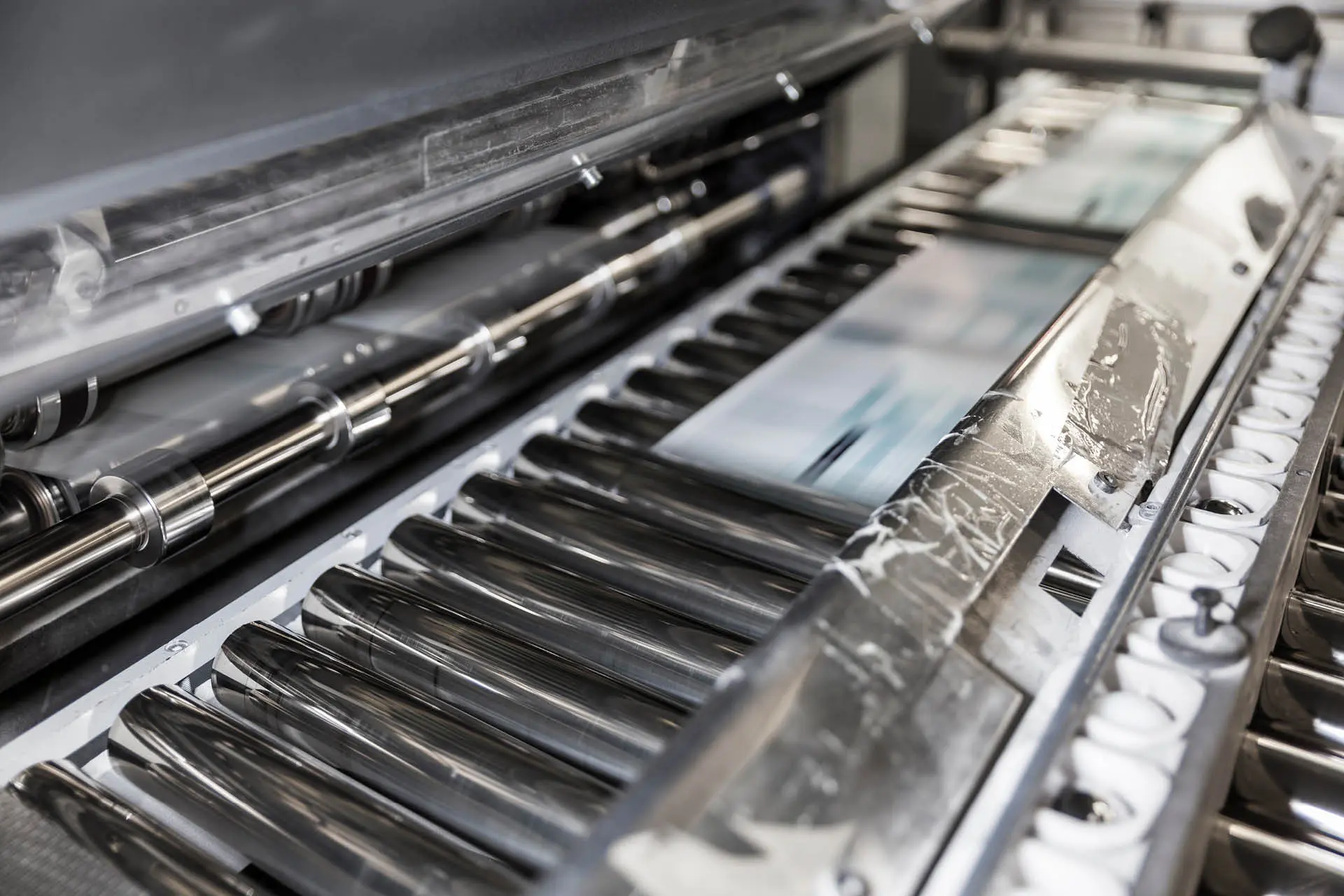The Vital Guide to Comprehending Litho Printing and Its Applications
Litho printing stands as a significant technique in the printing industry, rooted in the concepts of oil and water repulsion. This strategy not just delivers premium pictures yet likewise provides to various commercial requirements. Its applications range from marketing materials to packaging, showcasing its adaptability. As the industry adapts to brand-new technologies, the advancement of litho printing increases questions regarding its future and importance in a digital landscape. What exists in advance for this withstanding approach?

What Is Litho Printing?
Litho printing, a commonly made use of printing strategy, depends on the principle of oil and water repulsion. This method utilizes a flat printing surface, commonly a steel plate, which is dealt with to assure that the photo locations are responsive to oil-based inks while the non-image locations repel them. The procedure starts with the creation of an image on home plate, often through drawing or photo methods. As soon as the photo is prepared, the plate is moistened with water, complied with by the application of ink. The ink sticks only to the image locations, permitting exact recreation of graphics and text. Litho printing is preferred for its capability to create high-grade prints with great information and lively colors. It is typically used in business applications, including newspapers, publications, and product packaging, showcasing its convenience and effectiveness in satisfying the demands of modern-day printing.
The Background of Lithography
Although lithography is a contemporary printing staple, its origins map back to the late 18th century when German dramatist Alois Senefelder created the technique in 1796. Established as a method for duplicating texts and photos, lithography utilized a level stone surface area to create prints with a chemical procedure. Senefelder's advancement permitted higher adaptability and imaginative expression contrasted to previous printing methods.By the 19th century, lithography gained prevalent acceptance, ending up being a preferred choice amongst musicians and publishers. It made it possible for the automation of pictures, maps, and posters, especially affecting the printing market. The strategy even more progressed with the intro of lithographic presses, improving effectiveness and quality.As the commercial revolution progressed, lithography adapted to fulfill the needs of commercial printing, paving the method for modern-day applications. Today, it continues to be a crucial technique in different markets, consisting of publishing, packaging, and great art recreation.
Exactly How Litho Printing Works
A vital feature of litho printing is its reliance on the principle of oil and water repulsion - litho printing. In this process, images are transferred from a flat surface, normally a steel or polymer plate, to paper. Home plate is dealt with to make sure that the locations intended for printing attract ink, while the non-image areas repel it because of their affinity for water. The printing begins by dampening the plate with water, which adheres to the non-image areas. Subsequently, an oil-based ink is applied, sticking just to the desired photo areas.When home plate enters into contact with the substrate, the ink is transferred, creating a print. The litho printing procedure is qualified of generating top notch photos with great detail. It is typically utilized for automation due to its efficiency and consistency, making it a recommended approach for industrial printing applications
Advantages of Litho Printing
One notable advantage of litho printing is its ability to create high-quality photos constantly, making it a perfect selection for commercial tasks. This printing method utilizes a flat printing plate, ensuring even ink circulation and sharp details. Litho printing is likewise renowned for its shade accuracy, making it possible for dynamic and true-to-life recreations, which is important for branding materials.Moreover, it sustains a variety of substratums, including paper, cardboard, and even particular plastics, enhancing its flexibility. The procedure is cost-effective for big runs, as economic climates of range reduce per-unit expenses. Furthermore, litho printing has a fast turnaround time, allowing for effective manufacturing schedules.Its resilience also implies that published products stand up to fading, ensuring that the end product preserves its aesthetic allure gradually. On the whole, these benefits make litho publishing a preferred choice across various markets, contributing to its enduring popularity.
Applications of Litho Printing in Service
As organizations significantly look for reliable and premium printing options, litho printing becomes an essential player in various applications. This technique is especially favored for producing marketing products such as sales brochures, leaflets, and directories, thanks to its capability to supply vivid shades and sharp pictures. Furthermore, litho printing is frequently employed for product packaging remedies, permitting business to produce captivating labels and boxes that enhance item appeal.In the field of business identity, litho printing is critical in creating professional stationery, calling card, and advertising product, which help enhance brand name recognition. It is extensively utilized in the posting market for published materials such as publications and magazines, where regular high quality is paramount. In general, litho printing's adaptability and effectiveness make it a crucial tool for services aiming to connect efficiently and develop a strong market existence.
Artistic Uses of Litho Printing
Litho printing acts as a functional medium in the domain name of printmaking, offering artists a special method to reveal their creative thinking. This technique permits for a variety of imaginative applications, from conventional prints to modern analyses. By exploring the nuances of litho printing, musicians can harness its distinctive qualities to improve their job.

Printmaking Strategies Review
The virtuosity of printmaking incorporates a varied variety of methods, with litho printing attracting attention for its one-of-a-kind approach to image creation. This approach relies upon the concept of oil and water repulsion, enabling artists to draw straight onto a sedimentary rock or steel plate with a greasy tool. Once prepared, the plate is moistened and inked, moving the photo onto paper with stress. Litho printing is commemorated for its capability to create fine details and abundant tonal variants, making it a preferred choice amongst musicians. Furthermore, the process is functional, fitting both conventional click over here now techniques and modern adjustments. This versatility allows litho printing to bridge numerous creative styles, enriching the printmaking landscape with its distinctive characteristics and capacities.
Unique Artistic Applications
Exploring the unique creative applications of litho printing discloses its impressive flexibility in numerous innovative areas. Artists use litho printing to produce elaborate styles and structures, enabling for meaningful and in-depth see this site works. The process helps with the recreation of dazzling colors, making it perfect for illustrations and great art prints. Many modern musicians embrace lithography for its capability to incorporate conventional strategies with modern concepts, leading to cutting-edge artwork. Furthermore, litho printing is often employed in the production of minimal version prints, enhancing their value and charm. The responsive high quality of litho prints includes a distinct dimension, drawing in enthusiasts and art fanatics alike. Overall, litho printing remains a considerable medium for creative expression, connecting classic methods with modern imagination.
The Future of Litho Printing in a Digital Globe
As the printing market evolves, litho printing deals with the difficulty of integrating digital technologies to stay appropriate. Methods concentrated on electronic combination, together with patterns in sustainability and development, will shape its future - litho printing. Understanding these characteristics is crucial for sector stakeholders aiming to adjust to a swiftly altering landscape
Digital Combination Techniques
A growing number of litho printing firms are welcoming electronic combination techniques to stay affordable in a significantly digital landscape. By incorporating electronic operations, these firms can streamline procedures and enhance performance. This integration permits real-time information administration and enhanced interaction in between divisions, minimizing turn-around times noticeably. In addition, electronic devices enable better customization and personalization of printed products, providing to specific customer needs. Firms are additionally taking on crossbreed printing remedies that incorporate traditional litho strategies with electronic innovations, providing flexibility in production. Leveraging information analytics helps in recognizing market trends and client choices, allowing companies to make educated choices. Overall, digital combination is becoming essential for litho printing business intending to introduce and reply to developing market requirements.
Sustainability and Development Fads

Frequently Asked Inquiries
What Materials Are Generally Utilized in Litho Printing?
The products typically used in litho printing consist of aluminum plates, ink, water, and paper. Each element plays a vital function in the printing process, making certain premium photo reproduction and efficient transfer of ink onto the substratum.
Exactly How Does Litho Printing Contrast to Digital Printing?
Litho printing provides exceptional shade consistency and high quality for huge runs, while digital printing excels in brief runs and customization. Each method has unique benefits, providing to various demands based on production scale and cost-efficiency.
What Is the Normal Turnaround Time for Litho Printing Projects?
The common turn-around time for litho printing jobs differs, typically varying from a few days to a number of weeks. Aspects affecting this duration consist of job complexity, quantity, and required finishing processes, affecting overall production schedules.
Can Litho Printing Accommodate Customized Sizes and Formats?
Litho printing can undoubtedly fit personalized sizes and formats, permitting flexibility in design. This adaptability enables clients to achieve distinct print outcomes tailored to their specific demands, boosting the general efficiency of their jobs.
What Are the Environmental Impacts of Litho Printing?
The environmental impacts of litho printing consist of resource intake, chemical usage, and waste generation. Improvements in sustainable techniques and environment-friendly materials are progressively lowering these unfavorable effects, advertising a more eco accountable approach to printing.
Comments on “Substrate Compatibility in litho printing Explained”